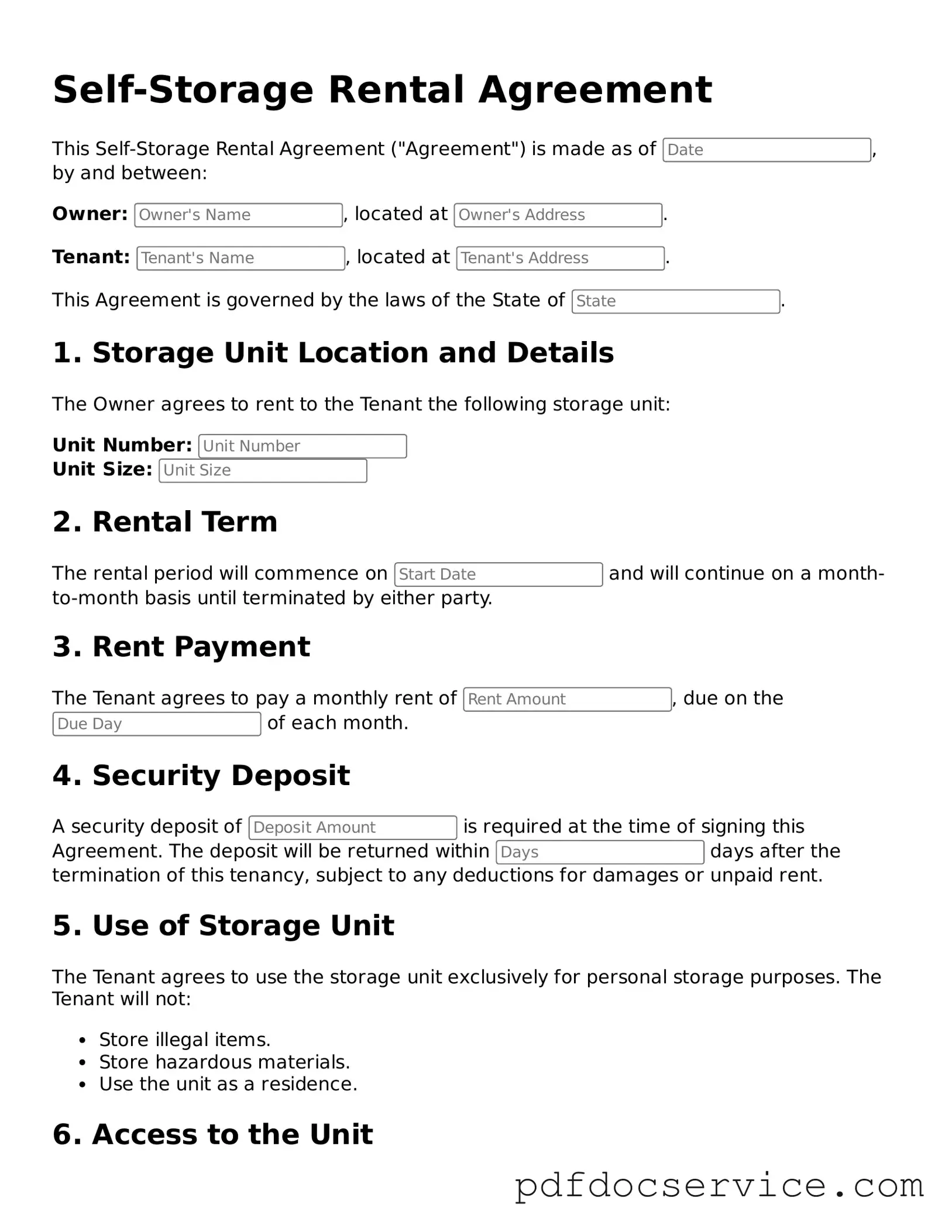Blank Self-Storage Rental Agreement Form
The Self-Storage Rental Agreement form is a legal document that outlines the terms and conditions between a storage facility and a renter. This agreement serves to protect the rights of both parties while clearly defining responsibilities, fees, and access to the storage unit. Understanding this form is crucial for anyone looking to rent a storage space, ensuring a smooth and secure rental experience.
Open Self-Storage Rental Agreement Editor
